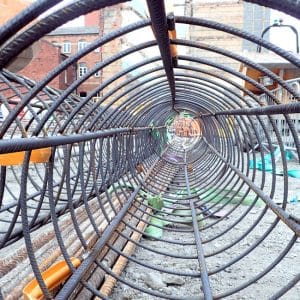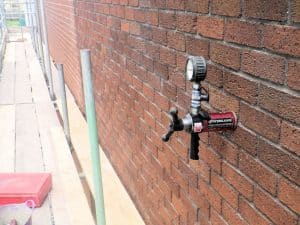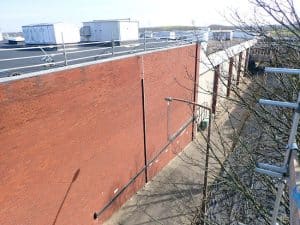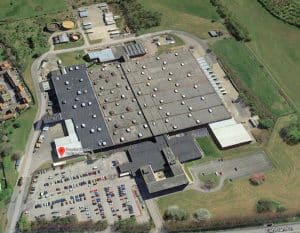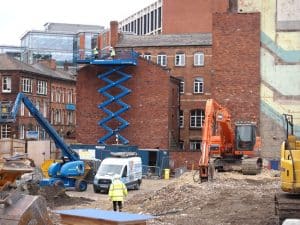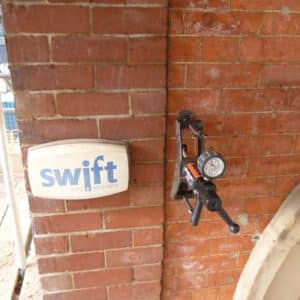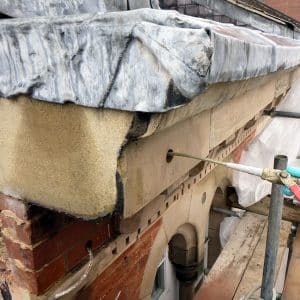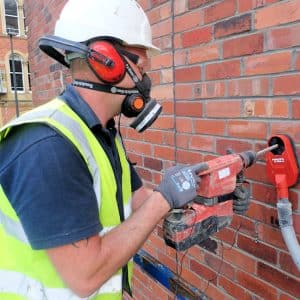Timber Infestations and Rot FAQs
Our timber infestations and rot specialists answer your questions
With wood infestations being a product of a variety of problems, there are plenty of questions you may want to ask when you first meet our timber infestations and rot specialists. We’ve tried to ensure that our main pages cover a lot of them, but here are a few more that we regularly hear, just in case you’re looking for more information.
If the question you’d like to ask isn’t featured below, please send us details and we’ll be happy to help – and also post the Q and A below to help others who are wondering the same thing. Or why not call and speak to our friendly and helpful team on Leeds 265 2752, York 566577 or Sheffield 224 5121 or email us via our contact page.
Also in this section
No, this won’t be caused by rot, but that doesn’t mean that it’s not a problem that needs dealing with. The presence of mould is usually caused by condensation, which in turn is usually a result of poor ventilation and high levels of humidity. It can also be the result of a leak or rainwater penetration. You should still ask for a survey, because houses with mould problems may also suffer from hidden rot problems caused by the high levels of dampness, causing the mould.
Almost certainly not. Dry rot can be eradicated completely, so it’s mere presence shouldn’t blight any property. The cost of the work will vary a lot, depending on the extent of the infection and how much damage it has caused. This may impact on the financial situation at point of purchase, but once that’s sorted out there should be no reason not to proceed. Our surveyor will be able to outline the full extent of the decay and provide a cost for treatment.
That’s what our rot specialists are here for. We can conduct a thorough survey to identify the exact cause and type of rot – but you can also get a pretty good idea of what problem you’re facing by reading our ‘what is wet rot’ and ‘what is dry rot’ pages. Not all fungus growing under floors, on walls and such is a wood destroying fungi. There are opportunistic fungal infections of damp plaster and even soil under floors. These are the buildings’ equivalent of athletes foot – annoying and ugly, but not that serious. Our surveyors will put your mind at rest if you just have a growth of plaster fungus or ink-cap…
When dry, wood is a sound and long lasting material. If it suddenly fails like this, there’s usually something badly wrong – that’s why it’s been such a well loved and reliable building material for thousands of years. If your floorboards are behaving like this, it’s very likely that rot or insect infestation is the cause. Have a close look with a magnifying glass and see if it is decay or woodworm infestation. We can help you get the right diagnosis, cost and guaranteed treatment so if you suspect timber infestation call us..
This depends on what caused it in the first place. All rots; wet or dry depend on moisture. If for example the rot was caused by a ‘one-off’ leak and that leak was fixed, then eventually any rot will die out. However, sometimes the cause may be an inherent building design defect. It could be a combination of factors. If any of these defects remain, the rot will continue to cause damage. Certain rots can cause severe structural problems, especially when floors, roofs or built in beams and lintels are involved. It’s better to get professional advice first – that’s where we come in. Time and effort spent on investigating the problem is money well spent as this will save you cost down the line.
Yes, we have a number of treatment methods to ensure your home is rot-free, but if the damage to your timbers is significant, we may need to undertake timber repairs or replacement too. Your survey will highlight any issues, their extent, and the most appropriate treatment.
Absolutely not! Wet rot species of fungus require different conditions to grow than dry rot. If conditions change for the worse i.e. get wetter, then yes, the dry rot species could, in theory, start up – however this is very rare, as in practice wet rot requires damp conditions for a stable long period. Dry rot, despite its name, loves very damp conditions, so it’s more commonly associated with causes such as leaking gutters and roofs. It’s possible for a property to have both wet rot and dry rot present, if conditions are right. A full and detailed survey by our qualified and experienced surveyors is required. Never just leave any rot untreated, as it will only get worse and in the case of dry rot, it may spread further.
Check out our information on woodworm signs and symptoms – you can also arrange a survey by one of our qualified timber specialists if you require an accurate, professional diagnosis. Our MD’s preservation expert blog has detailed information on this too. Why not check out one of our videos on active woodworm?
The risk of having woodworm or rot does increase with older properties, especially if there’s no damp course present, or if there are defects which have encouraged dampness. You’re right to wonder if you may have it, even if you’ve not noticed any specific signs. We can carry out a survey, which will identify any infestation if you want peace of mind, or the opportunity to catch any potential problem quickly. Please bear in mind that often, the woodworm infestation will be in hidden timbers such as floor beams and roof members. Our surveyors know where to look and we have the necessary specialist equipment to inspect hard to reach areas.
Don’t have nightmares though; one other benefit of old homes is that any woodworm found in them has a fair chance of attracting ‘treatment’ in the past. Those of us with decades in the industry (like our boss Bryan), have noticed a reduction in active woodworm infestation found on general homebuyer damp and timber surveys. One reason for this is that since world war 2, hundreds of thousands of houses have had woodworm treatment done, to floors or roofs. It follows that the holes made by the active infestations are still there, but the chances of the infestation being alive now are much reduced. Our surveyors will not recommend woodworm treatments unless they feel the treatment is justified.
No, but you cannot be present in the rooms we are spraying preservative, while we apply the treatment. However, depending on the specified treatment, you’ll be able to return in as little as a couple of hours for many treatments. Some treatments are more persistent and rooms treated may be ‘off limits’ for up to 48 hours. Ask your surveyor of qualified PCAQT staff member for details. For clients with certain health concerns, we may recommend a slightly longer period away from the property. Your health and safety is our main concern and we never use chemicals unless absolutely essential. We use tested and safe chemicals in minimum quantities to minimise hazard and risk. No work is done without a detailed risk assessment and the imposition of a safe system of work.
Death Watch Beetle can be very hard to eliminate and a detailed and careful assessment of the location and depth of the infestation is essential. Treatment is possible, but requires more than a simple surface spray of insecticide. Severe damage can be hidden, particularly in large section beams. Our Sibtec digital micro-drill is a high tech solution to checking the structural integrity of large beams, without damage. You can watch a video and read about the system in our listed building page and on our blog. Call our surveyors for more details on death watch beetle eradication and micro-drilling.
It’s a real possibility, because woodworm will often fly to windows when they emerge from wood to breed and lay eggs. However, there are also other harmless and very similar looking beetles which do this too. The best solution is to save one or two of the beetles and have these checked by our surveyor when he calls. Alternatively, you can try identification yourself – here’s a helpful article on this very subject: When is woodworm not woodworm. Beetles in the window sills does not always have a happy ending though, as you can see if you watch the video below:
We’ll let our managing director and founder Bryan Hindle answer this directly:
“This gets right to the heart of our relationship with our customers. It’s absolutely true that treatment of timber infestations and damp proofing pays our wages (amongst all our other activities). It pays our suppliers and our taxes too. We’re in business for the long term. This is our 3oth year with the same company number (check us out at companies house). You don’t get that sort of solid foundation by not looking after your customers. If we tell you fibs, to get work, double deal, lie to you or just give poor service, you will tell your friends and family. These days a quick search on google will soon reveal any dirty linen! Yes, we make profit out of rot and damp, but we do it year in year out, by meeting and often exceeding our customers needs. We view a ‘no evidence’ survey (where we do not issue a quote for work), as a chance to invest in our long term goodwill and, we get a kick out of surprising the most cynical or cautious of clients. We charge a small fee for our damp and timber surveys, so I suppose we are not under pressure to make a sale. In saying that, I surveyed for free for almost 25 years, and I was just as diligent and honest then too. Charging for a survey has changed us a bit, but not ethically, it’s just allowed us to take longer on site, be more thorough and offer customers a better survey service than ever before. The survey fee structure paid for our damp diagnosis laboratory – the first and probably only one of its kind in Yorkshire. That’s what we invest in – better equipment, better training and higher quality. This sustains my team. It pays to be straight and it’s how we would want our friends and families treated if they were customers – try us and see. There is never any obligation for you to accept a quote from us for anything. We’ll always put your needs before our own – it actually pays us to do this. Being happy and able to sleep soundly at night is just the icing on the cake”.
We realise that Bryan went on a bit there – but you did ask!
